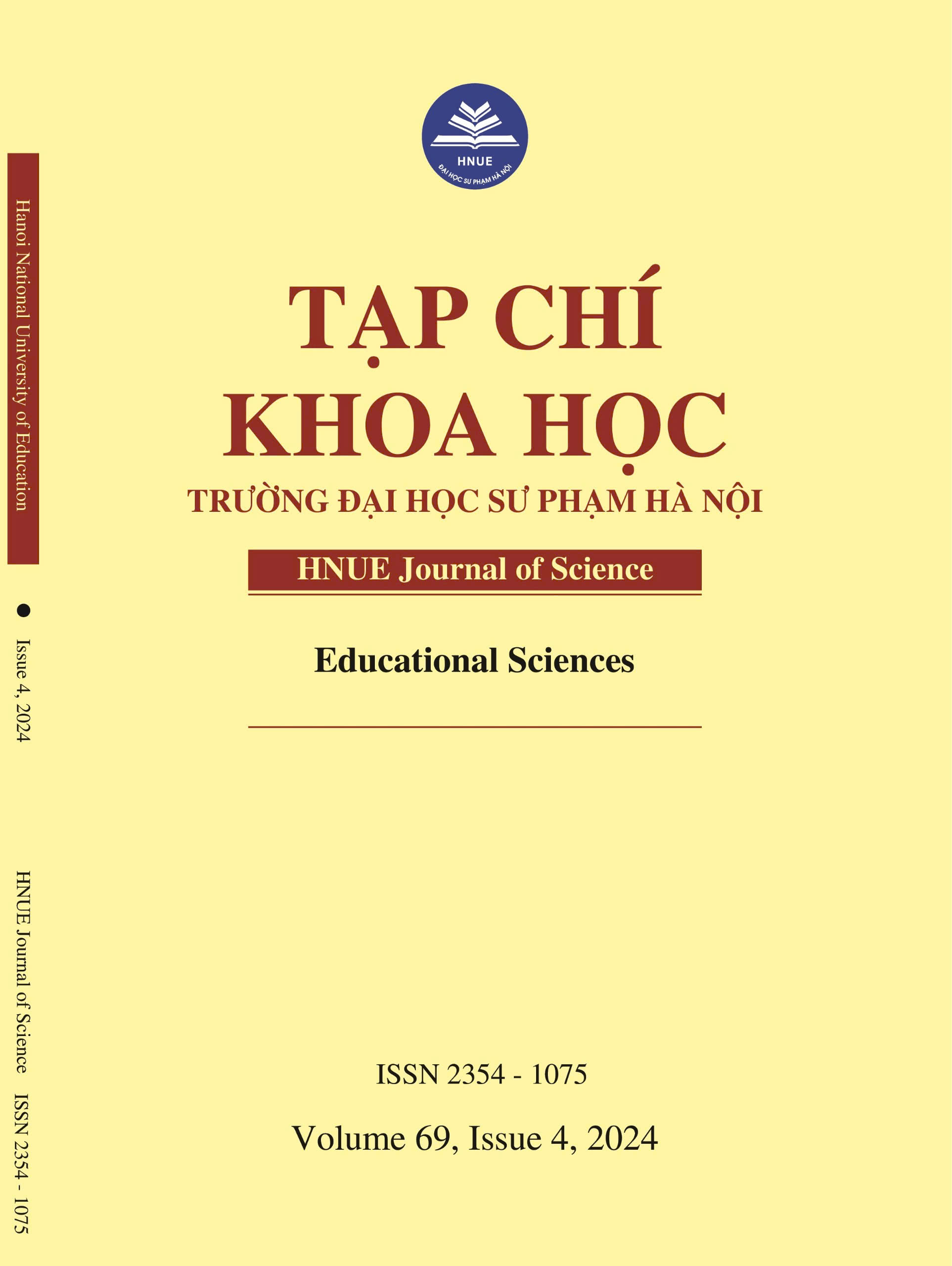INSTRUCTION BASED ON THE VARK LEARNING STYLES OF PRIMARY STUDENTS IN SCIENCE
DOI:
https://doi.org/10.18173/2354-1075.2024-0069Keywords:
Learning style, VARK, Science, Primary schoolAbstract
VARK is a learning style model developed by Neil Fleming in the 1980s. VARK represents the four main learning styles: Visual, Aural, Read/Write, and Kinesthetic. The VARK model provides a deep understanding of different learning preferences, consequently supporting both learners and educators within the teaching-learning process. This contributes to the goal of developing student competencies in the Science subject, as per the 2018 general education curriculum. This research is based on the theoretical analysis of learning styles, and the science curriculum, to propose a science teaching and learning process that addresses the various learning styles of elementary school students, with specific illustrative examples. At the same time, the research conducts pedagogical experiments to initially evaluate the effectiveness and feasibility of the proposed process. The flexible integration of VARK-based learning activities will create a diverse, engaging, and stimulating learning environment in the teaching and learning of the Science subject, which will encourage active student participation and contribute to the enhancement of scientific competencies for primary school students.
Downloads
References
[1] ND Fleming & C Mills, (1992). Not Another Inventory, Rather a Catalyst for Reflection. To Improve the Academy, 11(1), 137-155.
[2] ND Fleming & CC Bonwell, (2019). How do I learn best? A learner’s guide to improved learning-VARK: Visual, Aural, Read/Write, Kinesthetic. https://varklearn.com/wp-content/uploads/2019/07/How-Do-ILearn-Best-Sample.pdf. WL Leite, M Svinicki & Y Shi (2010). Attempted validation of the scores of the VARK: Learning styles inventory with multitrait-multimethod confirmatory factor analysis models. Educational and Psychological Measurement, 70(2), 323-339.
[3] N Othman & MH Amiruddin, (2010). Different perspectives of learning styles from VARK model. Procedia-Social and Behavioral Sciences, 7, 652-660.
[4] Ministry of Education and Training, (2018). General Education Curriculum for Science Subject (Issued together with Circular No. 32/2018/TT-BGDĐT dated December 26, 2018 by the Minister of Education and Training)
[5] S Liew, J Sidhu, & A Barua, (2015). The relationship between learning preferences (styles and approaches) and learning outcomes among pre-clinical undergraduate medical students. BMC Medical Education, 15, 1-7.
[6] HTH Van, (2013). A Study of Some Learning Style Models and Their Potential Application in Secondary Education, Research Code V2012-15. Institute-Level Research Project, Vietnam Institute of Educational Sciences.
[7] ND Fleming, (2012). Teaching and learning styles: VARK strategies. ISBN 978-0-473-07956-7.
[8] M Klement, (2014). How do my students study? An analysis of students of educational disciplines' favorite learning styles according to VARK classification. Procedia-Social and Behavioral Sciences, 132, 384-390.
[9] [10]. J Fox & W Hoffman, (2011). The differentiated instruction book of lists (Vol. 6). John Wiley & Sons. pp 32-48.
[10] NTH Chuyen, (2014). Differentiated Instruction Based on Students' Learning Styles. Journal of Education, Issue 347, pp. 35-37.
[11] PV Quynh, NV Hien (2018). Active Differentiation - A New Approach in Differentiated Instruction. Journal of Science, Hanoi University of Education, 63 (5), 180 -186.







